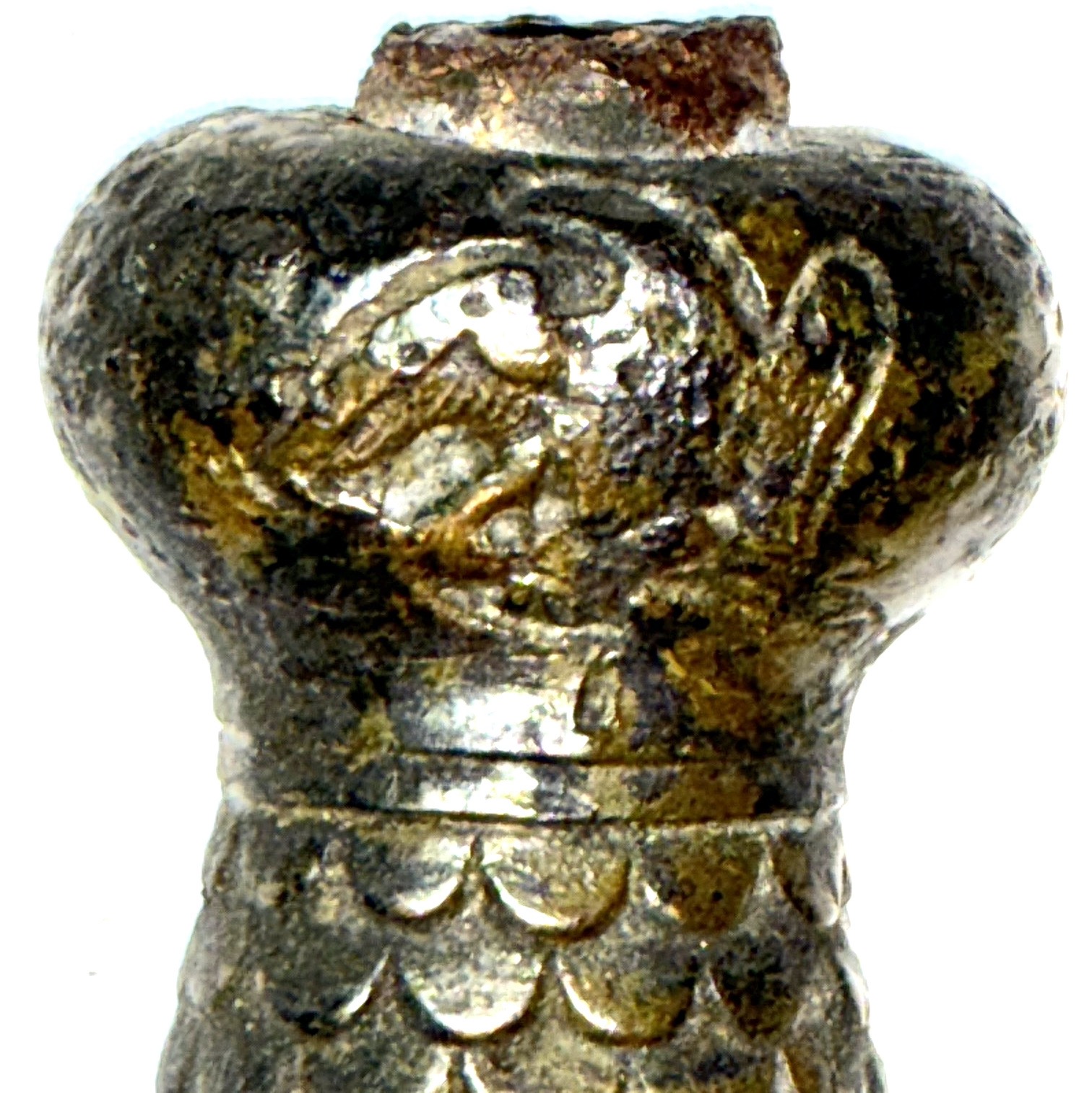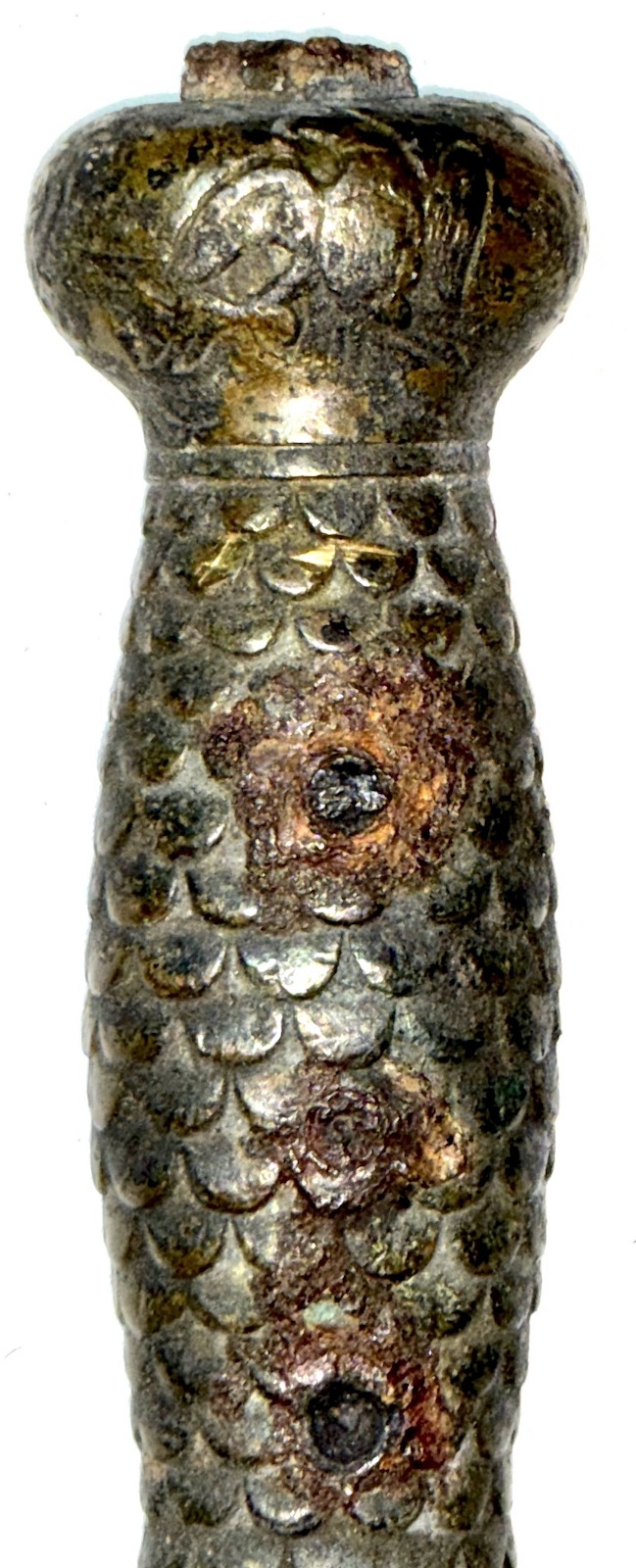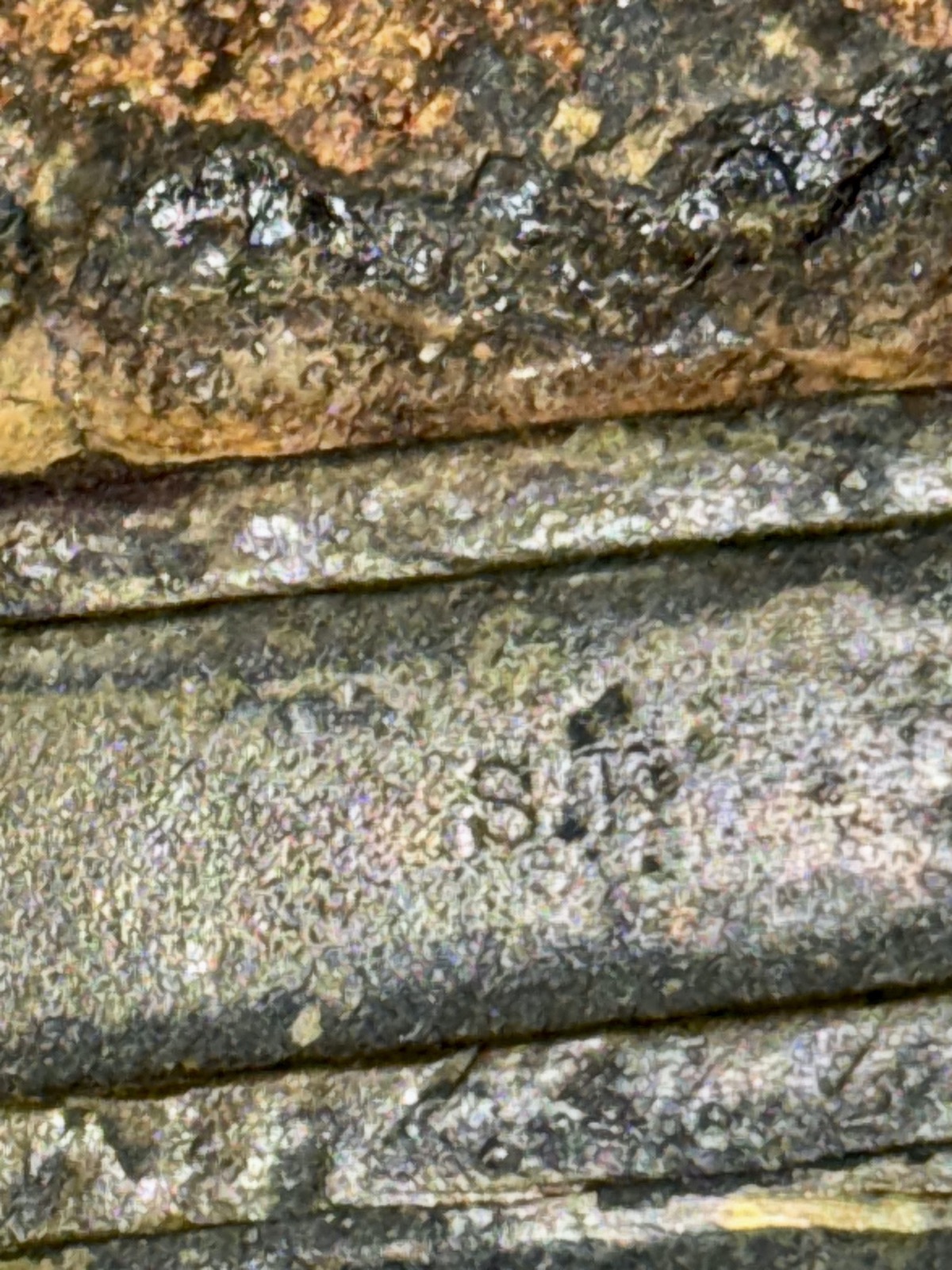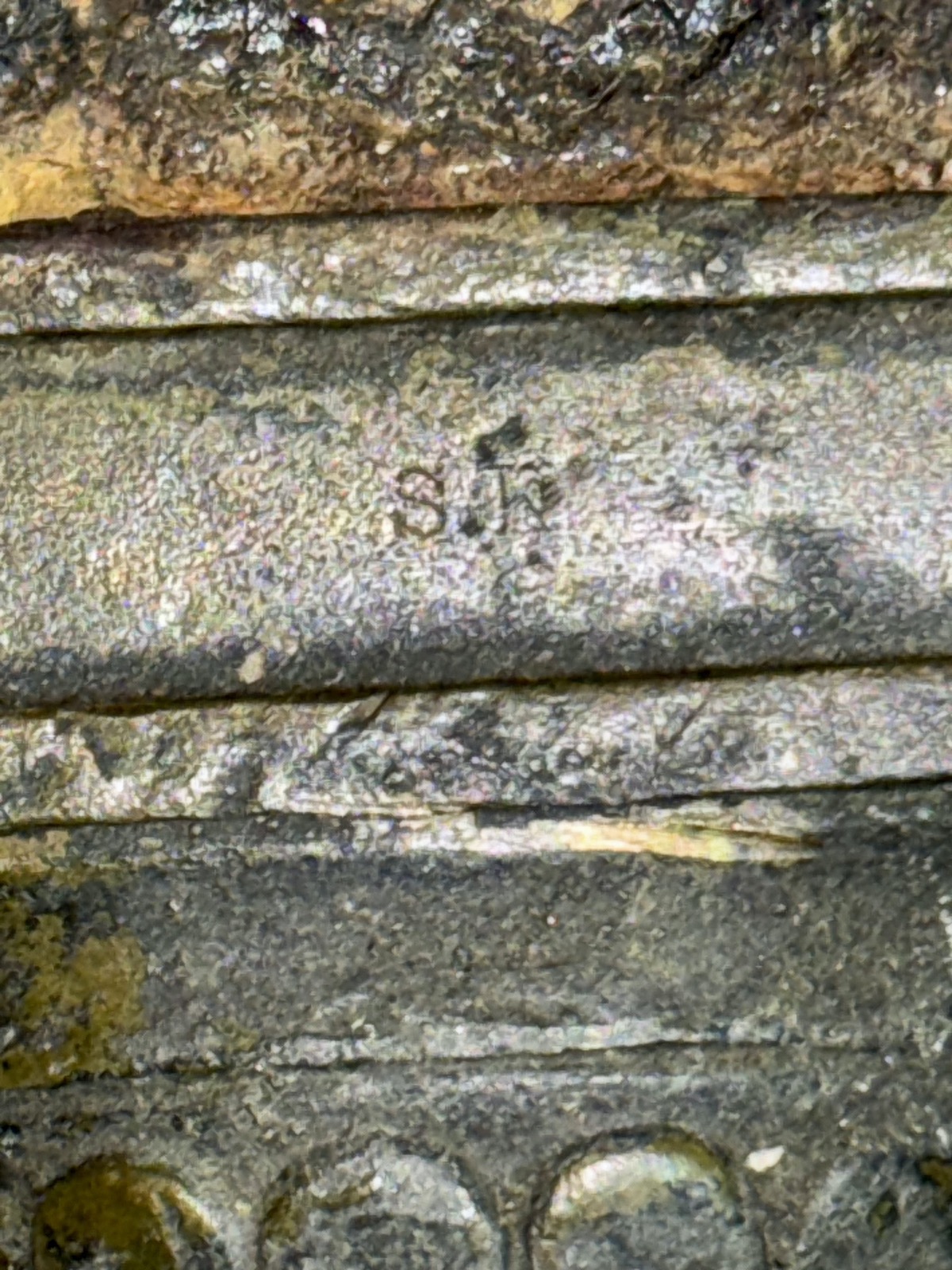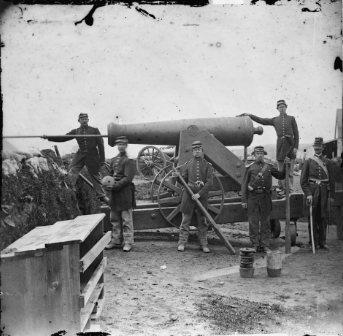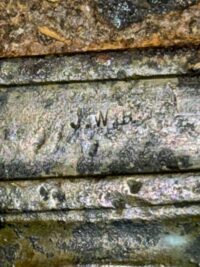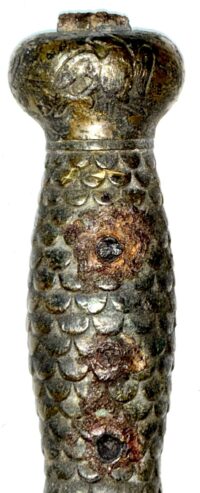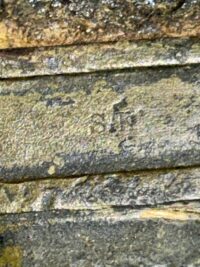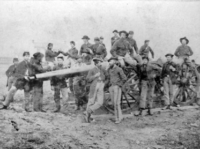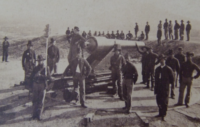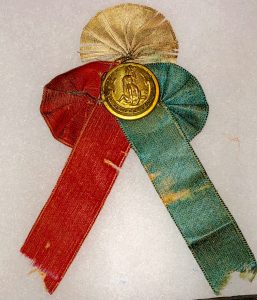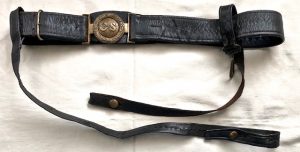Dug U.S. Model 1832 Heavy or Foot Artillery Sword
SOLD
Dug U.S. Model 1832 Heavy or Foot Artillery Sword – This heavy artillery sword was dug in Virginia, although that is as specific a location we know. The characteristic, heavy, brass hilt remains in good condition; the U.S. eagle is clearly visible on both sides of the bulbous pommel. Government inspector’s initials appear on both sides of the cross guard – “J.W.B.” on one side and – “S. H.” on the other. The hilt remains in overall, excellent, dug condition, exhibiting a mellow, brass patina. The blade is almost full-length, but it is quite rusty and considerably diminished in actual size. This is only the second, dug M1832 heavy artillery broad swords we have had. The Model 1832 foot artillery sword was a 25-inch short-sword with a straight, double-edged blade and brass-mounted leather scabbard.
Measurements: Overall length – 24”; Blade length – 18”
The U.S. Model 1832 foot artillery short-sword has a 6-inch (15 cm) solid brass hilt, a 4-inch (10 cm) crossguard, and a blade usually 19 inches (48 cm) in length. This model was the first sword contracted by the U.S. with the Ames Manufacturing Company of Springfield (later Chicopee), Massachusetts, with production starting in 1832. In later years, it was also imported and supplied by W.H. Horstmann & Sons of Philadelphia, Pennsylvania. As a personal side arm, it was intended for use by the regular or foot artillery regiments of the United States Army and remained in service until 1872 for use of foot artillerymen. It was the issue sword for sergeants and musicians of infantry regiments from 1832 until 1840. As most artillery regiments were trained and equipped as infantry prior to 1861 a single weapon for both types of troops made sense. It replaced the earlier Starr pattern sword used throughout the 1820s. While the design was impractical for actual combat, it is believed that artillerymen put this weapon to other uses, such as clearing brush or creating trails. It was an effective tool for cutting paths through the Florida swamps during the Second Seminole War, which occurred during the time it was issued to infantry sergeants, drummers and fifers. This is somewhat corroborated by the French nickname for their version of the sword, coupe choux (cabbage cutter). The last Ames contract for this sword was completed in 1862, although as a stock item it continued to be listed in company catalogs for decades afterwards.
The design was based on the French foot artillery short sword of 1816, which with minor changes was basically repeated in 1831. The French model was largely inspired by the Roman gladius, the standard sword of the Roman legionaries.






